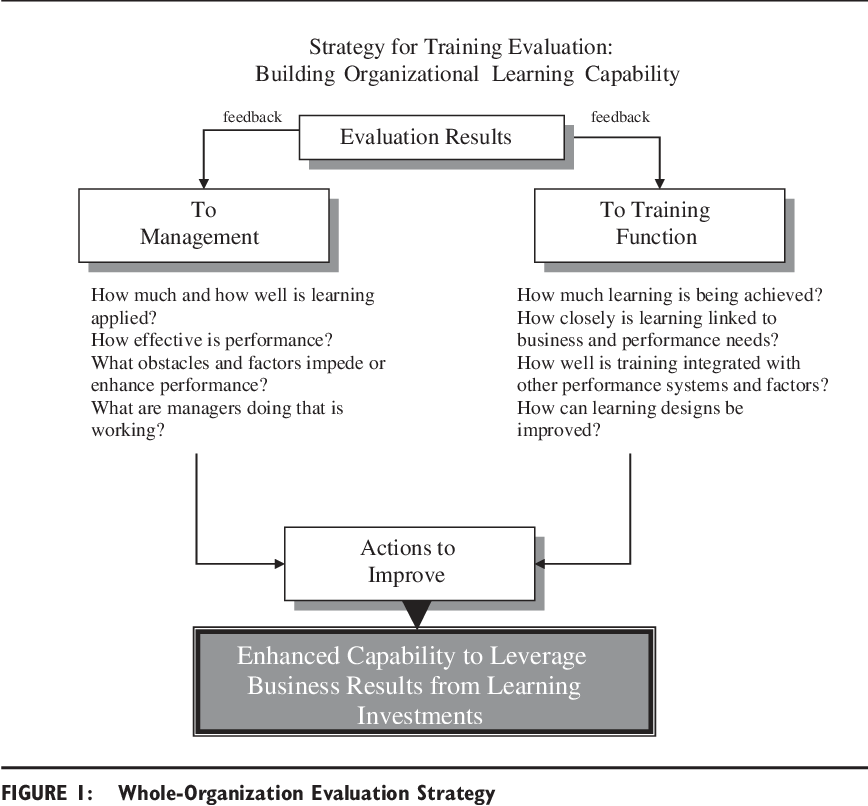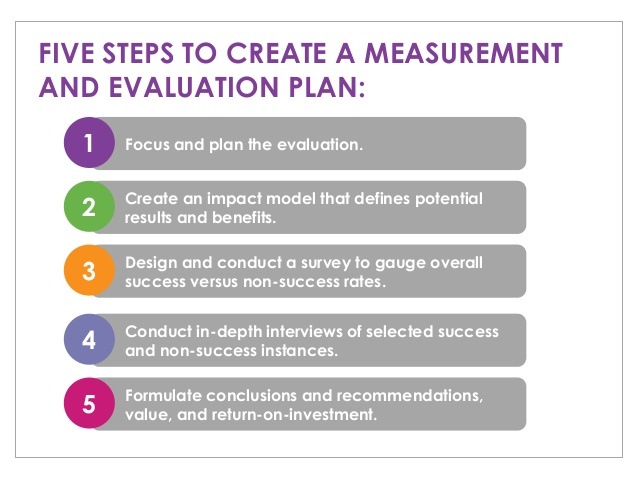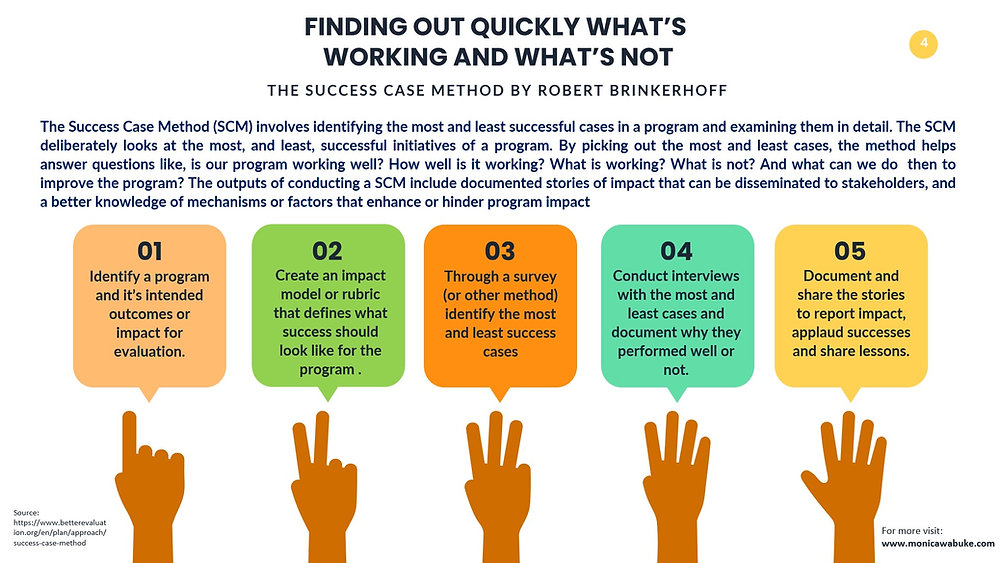Learning and Development (L&D) is a crucial facet of organizational growth, and assessing its effectiveness is paramount. One methodology that has gained traction in recent years is the Success Case Method (SCM). This approach seeks to identify and analyze extreme cases of success within a learning program, offering valuable insights into what works and why. In this article, we will explore the Success Case Method, highlight real-life examples of its application, delve into its pros and cons, and discuss alternative models that can complement or enhance its limitations.
Success Case Method: An Overview
The Success Case Method, pioneered by Robert Brinkerhoff, involves identifying and studying extreme cases of success and failure within a learning initiative. Instead of focusing on average results, SCM aims to uncover the factors that contribute to exceptional outcomes. The process typically includes identifying successful and unsuccessful learners, conducting in-depth interviews, and analyzing the data to draw conclusions about the effectiveness of the learning program.

Step-wise Implementation:
The stepwise implementation of SCM involves several key stages, each contributing to a comprehensive understanding of what works and why in HR-related learning programs.
1. Scenario Identification:
- In an HR context, scenarios could range from employee training programs to leadership development initiatives. The first step is to identify specific scenarios where success and failure are clearly defined. For instance, in a leadership development program, success may be exemplified by an individual who successfully transitions into a higher leadership role, while failure could be represented by someone struggling to implement acquired leadership skills.
2. Stakeholder Engagement:
- Once scenarios are identified, the next step is to engage with stakeholders involved in the learning initiative. This could include employees, managers, trainers, and HR professionals. Understanding diverse perspectives is crucial to capturing the nuances of success and failure accurately.
3. Participant Selection:
- Within each scenario, the SCM involves selecting participants who represent extreme cases of success and failure. For instance, in an employee training program, high-performing individuals could be identified as success cases, while those who struggled or did not show improvement may represent failure cases.
4. In-depth Interviews:
- Conducting in-depth interviews with the selected participants is a key component of SCM. These interviews delve into the participants’ experiences, perceptions, challenges, and the impact of the learning program on their performance. HR professionals can ask targeted questions to extract detailed insights, such as how the training influenced their daily tasks or contributed to their professional growth.
5. Data Analysis and Conclusion Drawing:
- Following the interviews, HR professionals analyze the collected data to identify patterns, common themes, and significant factors associated with success and failure. This analysis may involve both qualitative and quantitative methods to ensure a comprehensive understanding of the contributing elements.
6. Application of Insights:
- The insights gained from SCM can then be applied strategically to enhance HR practices. For instance, if the success cases highlight the importance of ongoing mentorship in leadership development, HR can implement mentorship programs for aspiring leaders. Conversely, if failure cases reveal gaps in the training content, adjustments can be made to address those deficiencies.
7. Continuous Improvement:
- One of the strengths of SCM is its iterative nature. HR professionals can use the continuous feedback loop provided by the method to refine and improve learning programs over time. Regularly revisiting the success and failure cases ensures that HR initiatives remain adaptive and aligned with organizational goals.
By applying the Success Case Method in various HR scenarios, organizations can gain nuanced insights into the effectiveness of their learning and development efforts. This method not only highlights what is working exceptionally well but also pinpoints areas for improvement, fostering a culture of continuous learning and development within the workforce.

Examples
- IBM’s Sales Training Program:
- Success Case: Identify a top-performing salesperson who underwent the training and achieved exceptional sales results.
- Analysis: Conduct interviews to understand the specific aspects of the training that contributed to the individual’s success.
- Insights: IBM can use this information to refine and optimize its sales training program, focusing on the elements that proved most effective.
- Google’s Onboarding Program:
- Success Case: Highlight a new employee who quickly adapted to the company culture and demonstrated outstanding performance.
- Analysis: Explore the onboarding process, mentorship, and support mechanisms that facilitated the employee’s success.
- Insights: Google can fine-tune its onboarding process based on the successful case, potentially improving the overall efficiency of integrating new hires.
Pros and Cons of Success Case Method
Pros:
- Focused Insights: SCM provides detailed insights into the specific elements that lead to success, allowing organizations to replicate and scale effective practices.
- Real-world Relevance: By studying actual cases within the organization, SCM ensures that insights are directly applicable to the company’s context.
- Cost-effective: It can be a cost-effective method compared to large-scale evaluations, as it targets specific cases rather than assessing the entire population.
Cons:
- Sample Bias: The extreme cases selected may not be representative of the overall population, leading to potential bias.
- Time-consuming: Identifying and studying success cases can be time-consuming, making it challenging for organizations with tight timelines.
- Limited Generalizability: Insights gained from extreme cases may not be easily generalizable to the broader workforce.
Alternative Models to Mitigate SCM Limitations
- Randomized Controlled Trials (RCTs):
- Pros: RCTs provide a more rigorous and statistically valid approach, minimizing sample bias.
- Cons: They can be resource-intensive and may not capture the nuanced aspects of success in real-world scenarios.
- Kirkpatrick’s Model of Training Evaluation:
- Pros: This model evaluates training at four levels, including reaction, learning, behavior, and results, offering a comprehensive perspective.
- Cons: It may not delve deeply into the specific elements that contribute to success in the way SCM does.
- 360-Degree Feedback:
- Pros: Involves collecting feedback from various stakeholders, providing a holistic view of an individual’s performance.
- Cons: Feedback may be subjective, and it may not isolate the impact of specific learning interventions.
Conclusion
While the Success Case Method offers valuable insights into learning program effectiveness, its limitations warrant consideration. Organizations can benefit from combining SCM with other evaluation models to create a more comprehensive and robust approach to L&D assessment. By understanding the pros and cons of each methodology, companies can tailor their evaluation strategies to align with their specific goals and resource constraints, ultimately fostering continuous improvement in their learning initiatives.











